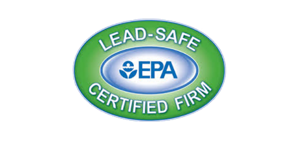Ever seen mold on your painted walls and wondered how to get rid of it? Mold can grow in just 24 to 48 hours if your walls are moist and warm. Since about 50% of U.S. homes have mold, it’s important to know how to deal with it.
Mold not only looks bad but can also harm your health. It affects up to 10% of people, causing allergies and irritation.
This guide will show you how to remove mold from painted walls. We’ll look at using natural solutions like vinegar and hydrogen peroxide. We’ll also talk about avoiding harsh chemicals like bleach. You’ll learn how to keep your walls safe and prevent mold from coming back.
Knowing these methods can save you money. DIY solutions work well for small mold problems, which are usually under 10 square feet. But, if the problem is bigger, professional help might be needed, costing between $500 to $6,000.
Key Takeaways
- Mold can grow on painted walls in as little as 24 to 48 hours under the right conditions of moisture and warmth.
- Approximately 50% of homes in the U.S. have some level of mold contamination, with painted walls being a common area of growth.
- The Environmental Protection Agency (EPA) estimates that mold can produce allergens and irritants, affecting up to 10% of the population who may experience health issues.
- DIY mold removal methods are effective for small infestations, typically defined as areas less than 10 square feet.
- Professional mold remediation services can cost between $500 to $6,000, depending on the extent of the infestation and the specific services required.
Causes of Mold Growth on Painted Walls
Too much humidity is a big reason for mold on painted walls. This is true in places like crawl spaces, windows, and furniture. Mold can make painted walls look dirty with dark spots or streaks.
It also smells musty, which means mold is growing. People who breathe in mold can get sick with allergies. About 10-30% of people have mold allergies.
Things like mold mites and poor air flow help mold grow. Up to 50% of homes in humid areas have this problem. Water leaks or floods also make mold worse.
Mildew looks like black, gray, or brown powdery stuff on walls and ceilings. It likes damp places with humidity over 60%. Bathrooms, with their high humidity, often get mildew.
Not having good air flow, leaks, or water from outside can cause mildew. It can damage paint, wood, and other materials. This is why we need to get rid of it fast.
Using the wrong paint in humid or outdoor areas raises mildew risk. Painting in damp, dark places increases this risk by 40%. Cleaning and sanitizing before painting can stop mildew by 60%. Rinsing well after cleaning can stop it from coming back by 40%.
To manage mold and mildew, we need to fix the problems. Using fans, exhaust fans, or dehumidifiers can cut mildew risk by 50% in certain rooms. Knowing these causes helps keep painted walls safe and looking good.
Preparation Before Removing Mold
Getting ready is key for safe and effective mold removal. Before you start on painted walls, follow these important steps. They make sure the process is safe and works well.
First, check how big the mold is. Mold can be black, white, green, or blue. It grows where it’s wet, like basements, showers, and windowsills. If it’s over 10 square feet or if it’s toxic black mold, get a pro.
Then, get your cleaning stuff ready. Use 2 cups hot water, 2 tablespoons borax, and ¼ cup vinegar for painted walls. Also, wear protective gear to avoid mold spores. This includes:
- Gloves
- Goggles
- Respirator or high-quality face mask
It’s important to ventilate the area. Mold spores are always in the air, but they need food and moisture to grow. Use an exhaust fan during and after showers to control moisture. Open windows or use fans to move air and reduce mold spores while cleaning.
Keep other surfaces safe from cleaning solutions. Use plastic sheets or drop cloths on floors and furniture to avoid damage. Having extra cleaning stuff, like a bucket, scrub brush, and dry cloths, is also helpful.
Make sure you have a dehumidifier or humidity reader. Keeping humidity low is key to stopping mold. Use a dehumidifier in wet areas to keep things dry and mold-free.
By taking these steps, you make mold removal safer and more effective. This protects people and their homes from health problems and damage.
How do you get mold off painted walls?
Removing mold from painted walls needs care to avoid paint damage. It’s important to get rid of mold completely. Here are some effective ways to remove mold from painted surfaces, using both natural and chemical solutions:
- Vinegar Solution: Vinegar is great for removing mold because it’s slightly acidic. Spray undiluted white vinegar on the moldy area and let it sit for 30 minutes. Then, scrub it with a brush and clean with water. If the mold is still there, repeat the process.
- Baking Soda Paste: Baking soda not only removes mold but also gets rid of bad smells. Mix baking soda with water to make a paste. Apply it to the moldy area, scrub gently with a brush, and then rinse with water and dry.
- Hydrogen Peroxide: For a mild chemical solution, use 3% hydrogen peroxide directly on the mold. Let it sit for 10 minutes, then scrub and clean with water.
- Bleach Solution: A bleach solution works well for killing mold on non-porous surfaces. Mix 1 cup of bleach with 1 gallon of water (1:10 ratio). Apply it to the moldy area and let it sit for 10 to 20 minutes before scrubbing and rinsing with clean water. But, don’t use bleach on porous surfaces like wood or drywall because it doesn’t penetrate well.
It’s also important to take steps to prevent mold from coming back:
- Use a Dehumidifier: Keeping indoor humidity levels between 30% and 50% can help prevent mold growth.
- Proper Ventilation: Make sure rooms with a lot of moisture, like bathrooms and kitchens, have good ventilation. Using exhaust fans can help lower humidity.
- Regular Maintenance: Fix any water leaks quickly to stop mold from growing.
- Protective Equipment: When dealing with big mold problems, wear protective gear like gloves, safety glasses, and an N-95 mask to avoid mold spores.
By using these methods and taking preventive steps, homeowners can remove mold from painted walls effectively. This helps keep their living environment healthy and free from mold.
Conclusion
Dealing with mold on painted walls requires a few steps. First, understand why mold grows. Then, get ready to clean it. Finally, use the right cleaning methods.
Mold is common, found in about half of U.S. homes. It can cause health problems like skin irritation and breathing issues. So, it’s important to spot and fix mold quickly to keep your home healthy.
Preventing mold is key. Keep your home’s humidity between 30-60%. Use dehumidifiers and HEPA air scrubbers to improve air quality. Also, make sure your home breathes well, especially in wet areas like bathrooms.
Check your roof, gutters, and plumbing often. This helps stop water leaks that can lead to mold. Regular checks can save you from a big mold problem.
There are many ways to clean mold, from natural solutions like white vinegar to commercial cleaners. For big mold areas, you might need a pro to get rid of it all. Using mold-resistant paint and cleaning often can help keep your home mold-free.






